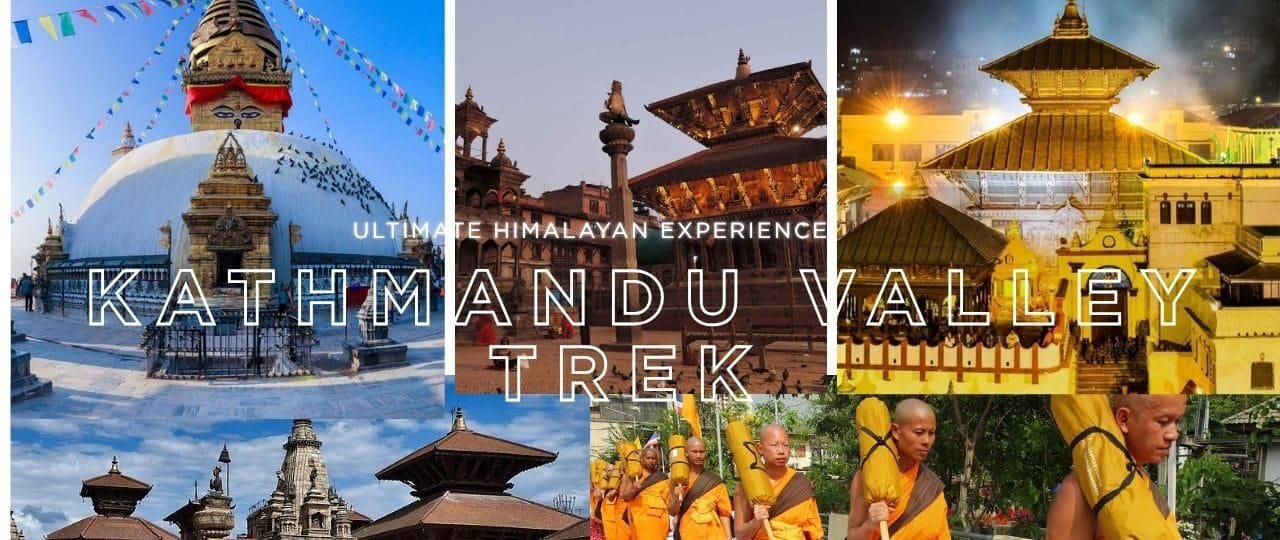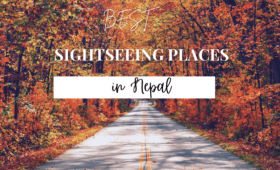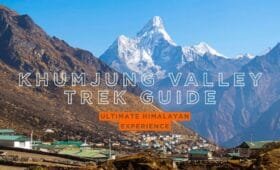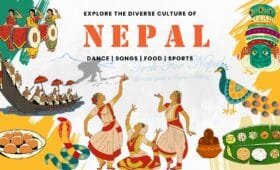The Kathmandu Valley Trek is an exceptional adventure that lets you explore the vibrant cultural heart of Nepal while venturing into the foothills of the Himalayas. Unlike the high-altitude challenges of Everest or Annapurna treks, the Kathmandu Valley Trek provides an immersive experience through lush landscapes, ancient villages, and spiritual sites—all within reach of Nepal’s bustling capital, Kathmandu. This comprehensive Kathmandu Valley Trek guide will walk you through every aspect of the trek, including a detailed Kathmandu Valley Trek Itinerary, cost breakdown, difficulty, route, weather considerations, accommodation options, permits, and essential packing tips. Moreover, you will learn how your adventure can contribute to community empowerment through Volunteers Initiative Nepal (ViN).
This article will share compelling statistics, expert insights, and real testimonials to help you confidently plan your trek. Whether you’re a seasoned trekker or a first-time adventurer, the Kathmandu Valley Trek offers an ideal blend of culture, history, and nature. Let’s dive into the ultimate Kathmandu Valley Trek guide to this unforgettable Himalayan journey.
1. Introduction: Discovering the Kathmandu Valley Trek
The Kathmandu Valley Trek uniquely explores Nepal’s rich cultural heritage and breathtaking natural landscapes. This trek offers a fascinating mix of ancient temples, bustling local markets, serene monasteries, and scenic hiking trails that meander through rolling hills and terraced farmlands. Starting right from Kathmandu, the trek is perfect for those who want to experience the authentic spirit of Nepal without having to endure the extreme altitudes of other Himalayan treks.
From the historical sites in the valley to the peaceful rural landscapes, the Kathmandu Valley Trek Itinerary provides a well-balanced route that caters to both cultural enthusiasts and adventure seekers. According to recent tourism data, over 70% of trekkers in Nepal choose routes that offer natural beauty and cultural insights, and the Kathmandu Valley Trek is a shining example of this blend.
“My trek through the Kathmandu Valley was an eye-opening experience. I witnessed centuries-old traditions and breathtaking scenery while feeling safe and well-accommodated. It was the perfect introduction to Nepal’s diverse beauty,” says Raj, an avid trekker from India.
This trek also serves as an excellent primer for those interested in exploring more challenging routes later, such as the Everest Base Camp or Annapurna Circuit. With moderate difficulty and excellent infrastructure, the Kathmandu Valley Trek is an accessible adventure for beginners and experienced trekkers.
Significance
2. Historical and Cultural Significance
2.1 Cultural Heritage of Kathmandu Valley
The Kathmandu Valley is steeped in history and culture. The valley is a living museum home to several UNESCO World Heritage Sites, including ancient palaces, temples, and stupas. The Kathmandu Valley Trek takes you through areas where traditional Newari culture thrives alongside Buddhist and Hindu influences. Trekkers encounter vibrant festivals, centuries-old architecture, and intricate wood carvings that tell the story of Nepal’s rich past.
Local communities welcome trekkers with warmth and hospitality. As you traverse through the valley, you’ll have the chance to interact with local artisans, visit ancient monasteries, and savor traditional Newari cuisine. These experiences enrich the trek and provide a deeper understanding of the valley’s cultural tapestry.
2.2 The Natural Beauty of the Valley
The valley’s natural landscapes are equally impressive. Lush forests, terraced fields, and scenic river valleys create a picturesque backdrop for the trek. The Kathmandu Valley Trek Map reveals an intricate network of trails that guide you through urban and rural settings, offering a unique perspective on how nature and civilization coexist in Nepal.
The valley’s geography reflects the interplay between the natural and the artificial. For instance, the ancient irrigation systems still in use today reflect centuries-old ingenuity. Trekking through these landscapes gives you a sense of continuity with the past and an appreciation for the local people’s sustainable ways of living.
Itenary
3. Detailed Itinerary: Your Kathmandu Valley Trek Itinerary
A well-structured Kathmandu Valley Trek Itinerary is key to a successful adventure. The itinerary outlined below provides a balanced mix of cultural exploration, physical challenge, and ample time for acclimatization and local engagement. This sample itinerary is designed for an 8-day trek, though it can be extended or shortened depending on your preferences.
Day 1: Arrival in Kathmandu
- Activities: Arrive in Kathmandu; check in to your hotel in Thamel; attend an orientation briefing.
- Highlights: Visit historical sites such as Durbar Square and Swayambhunath.
- Overnight: Hotel in Kathmandu.
Day 2: Kathmandu to Dhulikhel
- Transport: Drive from Kathmandu to Dhulikhel (approx. 2 hours).
- Activities: Enjoy the scenic drive with views of the Himalayas; explore Dhulikhel’s ancient temples.
- Overnight: Guesthouse in Dhulikhel.
Day 3: Dhulikhel to Namobuddha (Trek Begins)
- Trekking Duration: Approximately 5–6 hours.
- Route: Hike from Dhulikhel to Namobuddha, a pilgrimage site with Buddhist stupas and serene landscapes.
- Highlights: Panoramic views of the Himalayas, local villages, and terraced fields.
- Overnight: Teahouse in Namobuddha.
Day 4: Namobuddha to Panauti
- Trekking Duration: 5–6 hours.
- Route: Trek through forested trails and rural settlements.
- Highlights: Visit ancient Panauti, a historic town known for its cultural heritage.
- Overnight: Teahouse or guesthouse in Panauti.
Day 5: Panauti to Chandragiri
- Transport/Trek: Depending on your pace, you can hike or take local transport for part of the journey.
- Activities: Explore Chandragiri Hill’s historical sites and enjoy breathtaking views of Kathmandu Valley.
- Highlights: Cable car ride option for panoramic vistas.
- Overnight: Lodge near Chandragiri.
Day 6: Chandragiri to Phulchoki
- Trekking Duration: 5 hours.
- Route: Hike from Chandragiri to Phulchoki, a lesser-known trekking route offering quiet natural beauty.
- Highlights: Spectacular views of the valley and the surrounding mountains.
- Overnight: Basic teahouse or homestay near Phulchoki.
Day 7: Phulchoki to Kavre
- Trekking Duration: 5–6 hours.
- Route: Trek along rural trails, passing through small villages.
- Highlights: Immersion in local agricultural practices and traditional lifestyle.
- Overnight: Teahouse in Kavre District.
Day 8: Return to Kathmandu
- Transport: Drive from Kavre to Kathmandu (approx. 2–3 hours).
- Activities: Reflect on your trek and shop for souvenirs in Thamel.
- Overnight: Hotel in Kathmandu.
This Kathmandu Valley Trek Itinerary offers a diverse experience, from ancient cultural sites to modern rural life, ensuring that every day brings a new adventure. The journey is ideal for those who want to explore the valley’s rich heritage without venturing into the Himalayas’ higher, more strenuous altitudes.
4. Trek Route and Distance Overview
The Kathmandu Valley Trek Route is one of the most accessible and varied trekking experiences in Nepal. Covering a Kathmandu Valley Trek Distance of approximately 40–50 km round-trip, the trek provides a manageable yet enriching challenge. Unlike high-altitude treks, this route weaves through lush landscapes, historical towns, and serene countryside—all within a few hours’ drive of Kathmandu.
Key Route Highlights:
- Kathmandu to Dhulikhel: A scenic drive that marks the transition from urban sprawl to tranquil rural landscapes.
- Dhulikhel to Namobuddha: A culturally rich section where ancient temples and stupas stand as testaments to Nepal’s spiritual heritage.
- Namobuddha to Panauti: The route transitions between forest trails and historic towns, offering a glimpse into traditional Nepali life.
- Panauti to Chandragiri and Phulchoki: These segments provide sweeping views of the Himalayas and the Kathmandu Valley below.
- Phulchoki to Kavre: A quieter, rural part of the trek that emphasizes local agriculture and community life.
A detailed Kathmandu Valley Trek Map is indispensable. Local trekking agencies offer digital and printed maps highlighting trail junctions, elevation changes, and teahouse locations—ensuring you navigate the route quickly and confidently.
5. Assessing Trek Difficulty and Altitude
The Kathmandu Valley Trek Difficulty is generally considered moderate, making it an excellent introduction to trekking in Nepal. While the trek does not involve extreme altitudes compared to Everest Base Camp or Annapurna circuits, there are still challenges to consider.
Key Factors Influencing Difficulty:
- Elevation Gain: In some sections, the trek starts at lower altitudes and gradually ascends to around 2,000–2,500m. Although not as high as other Himalayan treks, even moderate altitudes can cause fatigue.
- Terrain: The route features a mix of paved roads, dirt trails, and steep ascents in areas like Namobuddha. The variety keeps the trek interesting but also demands physical endurance.
- Daily Walking Hours: Expect to walk 4–6 hours daily, with some days requiring more effort, especially when climbing steep slopes.
- Acclimatization: While the altitude is lower than many high Himalayan treks, taking short acclimatization breaks in Dhulikhel or Namobuddha can enhance your comfort and safety.
The Kathmandu Valley Trek offers a balanced challenge for trekkers with moderate fitness levels. For beginners, pacing yourself and maintaining hydration is key. Engaging a Kathmandu Valley Trek Guide can further ease concerns by providing local insights and ensuring you remain on the correct path.
Budgeting
6. Budgeting Your Adventure: Kathmandu Valley Trek Cost
The Kathmandu Valley Trek Cost is one of Nepal’s most affordable trekking options, making it an attractive choice for budget-conscious travelers.
Cost Components:
- Transportation:
- Private/Shared Vehicle: If shared, a short drive from Kathmandu to Dhulikhel may cost between USD 10–20 per person.
- Local Transport: Buses or jeeps for transfers within the valley are inexpensive.
- Accommodation & Food:
- Teahouses and Guesthouses: Basic lodging typically costs USD 3–6 per night in rural areas. Prices might be slightly higher in Dhulikhel or Namobuddha.
- Meals: Daily meal costs are between USD 20 and USD 30, depending on your choices and altitude.
- Permits:
- Kathmandu Valley Trek Permits: Although the trek is mainly outside significant conservation areas, specific segments near historical sites may require a small fee (usually less than USD 20).
- Guide & Porter Fees:
- Hiring a Kathmandu Valley Trek Guide is optional but can cost around USD 25–30 per day.
- Porters are available if you need extra help with heavy packs, usually around USD 15–20 daily.
- Miscellaneous:
- Hot showers, Wi-Fi, charging devices, and other small expenses can add another USD 2–5 per day.
A budget trekker on the Kathmandu Valley Trek Guide can expect to spend around USD 300–500 for a 7–9-day journey, while a guided package might range from USD 500–800. Always verify costs with local trekking agencies, as prices may fluctuate seasonally.
7. Permits and Documentation
While the Kathmandu Valley Trek is less regulated than high-altitude treks, some permits and documents are still essential:
- Local Municipality Permits: Certain regions or cultural sites in the valley may require a nominal permit fee (approximately USD 20).
- TIMS Card: To extend your trek into other protected areas, you may need a TIMS card (around USD 10–20).
- Identification: Always carry your passport and copies of essential documents, including travel insurance and permit slips.
The necessary permits and documentation guarantees a smoother trekking experience and supports local conservation and heritage initiatives.
Weather
8. Weather Conditions and the Best Time to Trek
8.1 Kathmandu Valley Trek Best Time
The Kathmandu Valley Trek Best Time is generally during the autumn (September to November) and spring (March to May) seasons:
- Autumn: Offers clear skies, stable weather, and crisp, cool nights. This season provides optimal trekking conditions and spectacular vistas of the surrounding Himalayan peaks.
- Spring: Characterized by blooming rhododendrons, pleasant temperatures, and moderate rainfall, making it an excellent time for trekking with fewer crowds.
8.2 Kathmandu Valley Trek Weather
Weather along the Kathmandu Valley Trek can vary:
- Lower Altitudes (Kathmandu, Dhulikhel): Generally warm during the day with cooler nights.
- Mid to High Altitudes (Namobuddha, Panauti): Cooler temperatures with potential for rain or fog during spring.
- Winter: Cold, especially at night, though days are clear.
- Monsoon: Heavy rainfall and increased humidity; trekking becomes challenging due to slippery paths.
It is crucial to pack appropriately for variable weather conditions. Carrying layers, waterproof gear, and sun protection will ensure comfort throughout the trek.
9. Accommodation and Amenities Along the Trek
Kathmandu Valley Trek Accommodation varies widely along the route. Here’s what you can expect:
- Kathmandu: Start in a comfortable hotel in Thamel that offers modern amenities.
- Dhulikhel and Namobuddha: Guesthouses and teahouses provide basic but comfortable lodging with traditional Nepali hospitality.
- Panauti and Chandragiri: In these historic towns, accommodation tends to be simple, focusing on local culture rather than luxury.
- Rural Lodges: Teahouses offer communal dining and shared rooms in smaller villages. Facilities might be basic, but the experience is authentic.
The quality of accommodation generally improves as you approach tourist hubs like Namche Bazaar. However, prices remain affordable, making the Kathmandu Valley Trek accessible to budget travelers. Expect nightly costs to range from USD 3 to 10, with meals averaging around USD 20–30 daily.
Trekking Tips
10. Essential Trekking Tips and Packing List
10.1 Kathmandu Valley Trek Packing List
For a successful trek, it is essential to pack smartly. Here’s a suggested packing list for the Kathmandu Valley Trek:
- Clothing:
- Thermal base layers
- Fleece or down jacket
- Waterproof, windproof jacket
- Trekking pants and moisture-wicking shirts
- Warm hat, gloves, and scarves
- Footwear:
- Well-broken-in trekking boots
- Trekking socks and gaiters
- Accessories:
- Trekking poles
- Sunglasses, hat, and sunscreen
- Buff or scarf
- Backpack:
- Daypack (25-35L) for essentials
- Hydration:
- Reusable water bottles or hydration systems, water purification tablets
- Gear:
- Headlamp with extra batteries
- Camera, power bank, and memory cards
- Personal first-aid kit, multi-tool
- Documents:
- Passport, permits, TIMS card, travel insurance
- Miscellaneous:
- Snacks (energy bars, nuts)
- Travel journal and pens
- Extra cash for local expenses
10.2 Additional Kathmandu Valley Trek Tips
- Acclimatize: Even at moderate altitudes, allow rest days to adapt to higher elevations.
- Stay Hydrated: Drink at least 3 liters of water per day.
- Pace Yourself: Maintain a steady pace, especially on steep ascents. Use trekking poles for added support.
- Respect Local Culture: Always greet locals with “Namaste” and ask before taking photos.
- Weather Preparedness: Pack layers and waterproof gear to cope with sudden weather changes.
- Plan Ahead: Secure accommodations in advance during peak seasons.
- Health Precautions: Carry a basic first-aid kit and altitude medication if needed.
FAQs
11. Seven Frequently Asked Questions
1. What is the total distance of the Kathmandu Valley Trek?
The Kathmandu Valley Trek Distance is approximately 40–50 km round-trip, depending on the route and detours.
2. How difficult is the Kathmandu Valley Trek?
The Kathmandu Valley Trek Difficulty is generally moderate, suitable for trekkers with average fitness and a desire to explore cultural sites.
3. What is the typical duration of the trek?
The Kathmandu Valley Trek usually lasts 7–9 days, allowing ample time for acclimatization and cultural immersion.
4. How much does the trek cost?
The Kathmandu Valley Trek Cost varies by individual budget, generally ranging from USD 300–600 for a budget-friendly teahouse trek and between USD 500–800 for guided packages.
5. Which permits are required for the trek?
You may require local municipality permits and a TIMS card (USD 10–20). Specific permit fees vary by region, so check with your Kathmandu Valley Trek Guide.
6. What is the best time to trek in the Kathmandu Valley?
The best time to do the Kathmandu Valley Trek is during autumn (Sept–Nov) or spring (March), when weather conditions are optimal and the scenery is vibrant.
7. Do I need a trekking guide for the Kathmandu Valley Trek?
A Kathmandu Valley Trek Guide is optional but recommended for safety, local insights, and logistical support, especially if you are new to Himalayan trekking.
Conclusion
Conclusion
The Kathmandu Valley Trek is a unique gateway to exploring the heart and soul of Nepal. From the bustling streets of Kathmandu to the tranquil, culturally rich villages scattered across the valley, this trek offers an immersive experience that blends adventure, history, and tradition. With manageable distances, moderate difficulty, and a wealth of cultural landmarks, the trek is ideal for those seeking a well-rounded Himalayan adventure.
Moreover, trekking with Volunteers Initiative Nepal (ViN) elevates your journey beyond personal achievement. By joining ViN’s charity trekking and travel tours, you create a “double impact”—your adventure contributes directly to community empowerment in Nepal. Every step you take supports local education, healthcare, and sustainable development initiatives, ensuring that your passion for trekking leaves a lasting positive legacy.
Embrace the Double Impact
Share: Spread the word among friends and family to inspire more travelers to join the cause.
Volunteer: Contribute your time and skills to help local communities thrive.
Intern: Combine your academic or professional background with hands-on experience in Nepal.
Donate: Your support can transform lives by funding crucial community projects.
Namaste—let your journey through the Kathmandu Valley be one of adventure, discovery, and meaningful impact. The path ahead is a route through stunning landscapes and a bridge connecting diverse cultures and uplifting communities.




